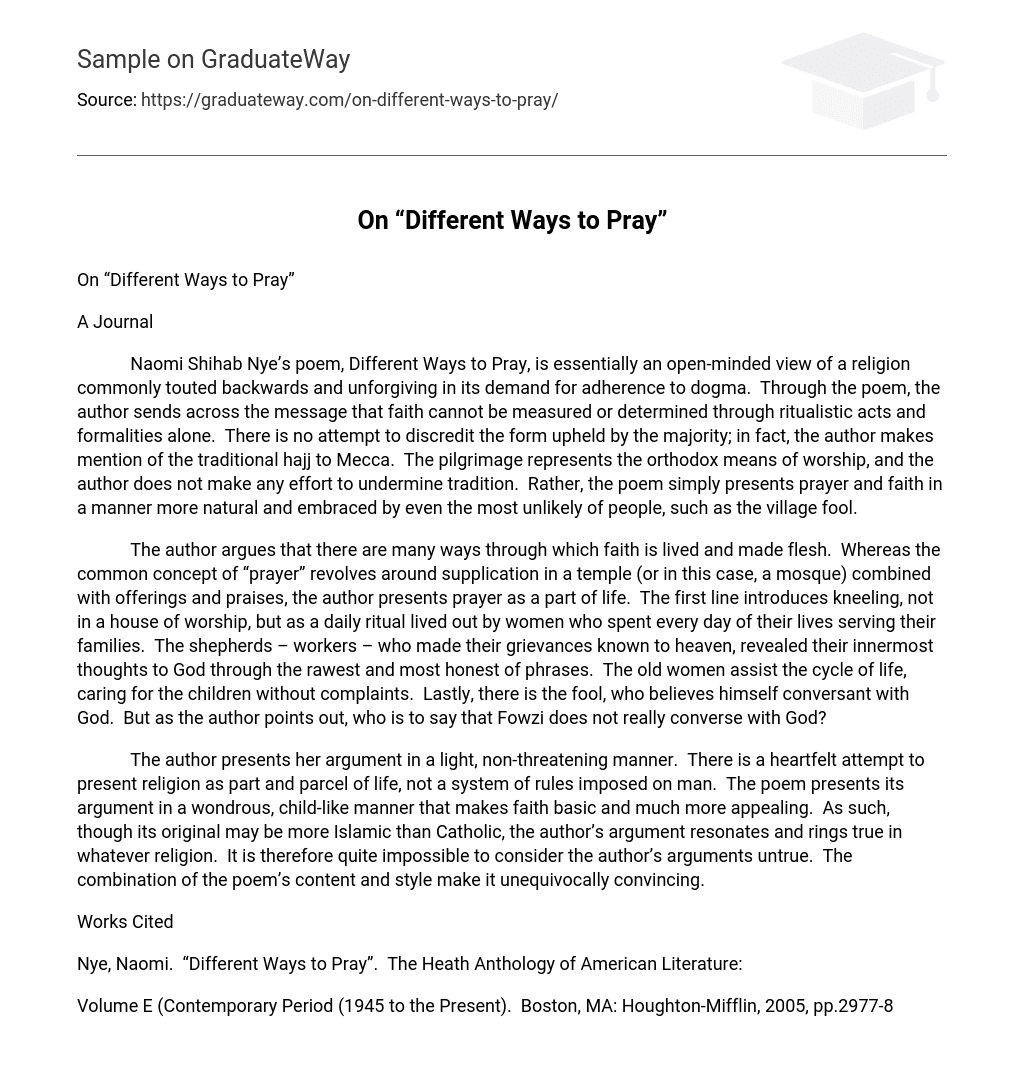Naomi Shihab Nye’s poem, Different Ways to Pray, is essentially an open-minded view of a religion commonly touted backwards and unforgiving in its demand for adherence to dogma. Through the poem, the author sends across the message that faith cannot be measured or determined through ritualistic acts and formalities alone. There is no attempt to discredit the form upheld by the majority; in fact, the author makes mention of the traditional hajj to Mecca.
The pilgrimage represents the orthodox means of worship, and the author does not make any effort to undermine tradition. Rather, the poem simply presents prayer and faith in a manner more natural and embraced by even the most unlikely of people, such as the village fool.
The author argues that there are many ways through which faith is lived and made flesh. Whereas the common concept of “prayer” revolves around supplication in a temple (or in this case, a mosque) combined with offerings and praises, the author presents prayer as a part of life. The first line introduces kneeling, not in a house of worship, but as a daily ritual lived out by women who spent every day of their lives serving their families.
The shepherds – workers – who made their grievances known to heaven, revealed their innermost thoughts to God through the rawest and most honest of phrases. The old women assist the cycle of life, caring for the children without complaints. Lastly, there is the fool, who believes himself conversant with God. But as the author points out, who is to say that Fowzi does not really converse with God?
The author presents her argument in a light, non-threatening manner. There is a heartfelt attempt to present religion as part and parcel of life, not a system of rules imposed on man. The poem presents its argument in a wondrous, child-like manner that makes faith basic and much more appealing.
As such, though its original may be more Islamic than Catholic, the author’s argument resonates and rings true in whatever religion. It is therefore quite impossible to consider the author’s arguments untrue. The combination of the poem’s content and style make it unequivocally convincing.
Works Cited
- Nye, Naomi. “Different Ways to Pray”. The Heath Anthology of American Literature:
- Volume E (Contemporary Period (1945 to the Present). Boston, MA: Houghton-Mifflin, 2005, pp.2977-8





